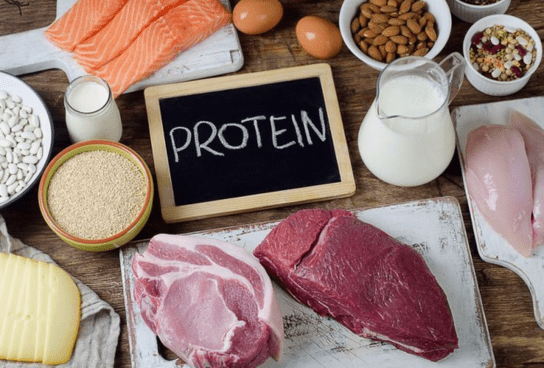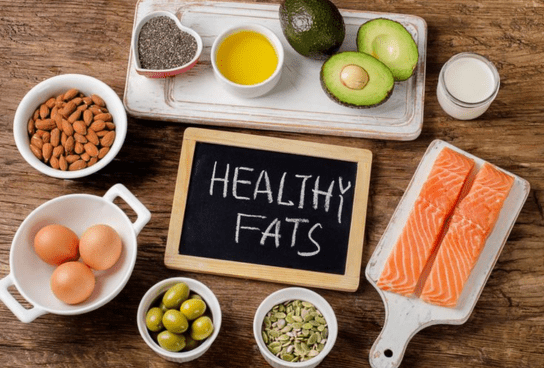
Fat burning is a crucial aspect of overall health and fitness, playing a significant role in our body’s energy management. To understand the best way to burn fat, it is imperative to grasp the basic science behind fat metabolism. Fat, stored in adipose tissues, serves as a dense energy reserve that the body taps into when glucose levels are low. During physical activities or periods of caloric deficit, the body converts stored fat into fatty acids and glycerol, which are then used to generate energy.
Maintaining a healthy body fat percentage not only supports energy needs but also offers a myriad of health benefits. Improved cardiovascular health is one of the primary advantages, as excessive fat, particularly visceral fat, is associated with an increased risk of heart disease and hypertension. By reducing body fat, individuals can significantly lower their risk of developing these conditions.
Another significant benefit is enhanced mobility. Excess body fat can strain joints and muscles, leading to discomfort and decreased physical performance. By managing body fat levels, individuals can experience greater ease of movement and reduced joint pain, facilitating an active lifestyle.
Moreover, achieving and maintaining a healthy body fat percentage can lead to improved self-esteem. Many people find that as they lose excess fat and their bodies become more toned, they feel more confident and comfortable in their skin. This psychological boost can be a powerful motivator in maintaining a healthy lifestyle.
In essence, understanding the importance of fat burning and the science behind it lays the foundation for implementing effective strategies to achieve and sustain a healthy body composition. This comprehensive guide will delve deeper into various methods and tips to help you find the best way to burn fat, ensuring both physical and mental well-being.
Understanding Your Body Type and Metabolism
Understanding your body type and metabolism is essential in identifying the best way to burn fat effectively. The three primary body types—ectomorph, mesomorph, and endomorph—each have unique characteristics that influence how fat is stored and metabolized.
An ectomorph typically has a lean and slender frame with a fast metabolism, making it challenging to gain weight. Mesomorphs possess an athletic build, characterized by a naturally higher muscle mass and a moderate metabolism, allowing them to gain and lose weight relatively easily. Endomorphs, on the other hand, have a higher tendency to store fat due to a slower metabolism and a rounder or stockier body structure.
Metabolism plays a critical role in burning fat. It refers to the chemical processes in the body that convert food into energy. A higher metabolic rate means more calories are burned, even at rest. Several factors influence metabolism, including age, gender, and genetics. For instance, metabolism typically slows down with age, and men generally have a higher metabolic rate than women due to greater muscle mass. Genetic predispositions can also impact metabolic efficiency and fat storage.
Identifying your body type can help tailor a fat-burning strategy that aligns with your unique physiology. Ectomorphs may benefit from resistance training and a higher calorie intake to build muscle mass, while mesomorphs can focus on a balanced approach combining strength training and cardiovascular exercises. Endomorphs might find a combination of high-intensity interval training (HIIT) and a carefully monitored diet to be most effective.
To determine your body type, observe your physical characteristics and how your body responds to diet and exercise. Consulting a fitness professional or conducting an assessment can provide further clarity. By understanding your body type and metabolism, you can optimize your approach to burning fat and achieving your fitness goals more efficiently.
When it comes to finding the best way to burn fat, nutrition serves as the cornerstone. A balanced and nutrient-rich diet is pivotal in achieving and sustaining fat loss. Understanding macronutrient ratios—proteins, carbohydrates, and fats—plays a crucial role in this process. Each macronutrient has a specific function in the body, and striking the right balance can significantly accelerate fat loss.
Proteins are essential for repairing and building muscle tissues, which is integral for maintaining a high metabolic rate. Incorporating lean protein sources such as chicken, fish, and legumes can help in preserving muscle mass while facilitating fat loss. Carbohydrates, often misunderstood, are vital for providing the energy needed for daily activities and workouts. Opting for complex carbohydrates like whole grains, vegetables, and fruits ensures a steady release of energy without spikes in blood sugar levels.
Healthy fats, though calorie-dense, are indispensable for hormonal balance and overall health. Sources like avocados, nuts, and olive oil should be included in moderation to support fat loss. Creating a calorie deficit, where the number of calories consumed is less than the calories burned, is fundamental to any fat-loss strategy. However, it is important to ensure that this deficit is moderate to avoid metabolic slowdown and nutrient deficiencies.
Meal timing and portion control are also significant factors. Eating smaller, more frequent meals can help in maintaining energy levels and preventing overeating. Hydration should not be overlooked, as water supports metabolic processes and can aid in appetite control. Drinking at least 8-10 glasses of water daily is recommended.
Incorporating fat-burning foods into your diet can further enhance results. Foods like green tea, chili peppers, and high-fiber vegetables have been shown to boost metabolism and aid in fat oxidation. A sample meal plan might include a breakfast of oatmeal with berries, a lunch of grilled chicken salad, and a dinner of steamed vegetables with quinoa. Snacks such as Greek yogurt or a handful of almonds can also support fat-burning goals.
The Role of Exercise in Fat Burning
When considering the best way to burn fat, exercise plays a pivotal role. Different types of exercises contribute uniquely to fat loss and overall fitness. Cardiovascular exercises, strength training, and high-intensity interval training (HIIT) are particularly effective.
Cardiovascular exercises, such as running, cycling, and swimming, elevate the heart rate, which helps burn calories and fat. These activities increase the body’s demand for oxygen and energy, leading to a higher calorie expenditure. Consistent cardio workouts can improve heart health and endurance, making it easier to perform daily activities while burning fat.
Strength training, on the other hand, focuses on building muscle mass. Activities such as weightlifting, resistance band exercises, and bodyweight exercises like push-ups and squats are integral to this regimen. Muscle tissue burns more calories than fat tissue, even at rest, which means that increasing muscle mass can boost your resting metabolic rate. Consequently, this can contribute significantly to long-term fat loss.
High-intensity interval training (HIIT) combines the benefits of both cardio and strength training. It involves short bursts of intense activity followed by periods of rest or low-intensity exercise. HIIT is highly effective for burning calories and fat in a shorter time frame. Moreover, it creates an “afterburn effect,” where the body continues to burn calories at an elevated rate even after the workout has ended.
To maximize fat burning and prevent plateaus, it’s essential to create a balanced workout routine. Incorporate a mix of cardiovascular exercises, strength training, and HIIT sessions throughout the week. This variety not only keeps the workouts interesting but also challenges different muscle groups, promoting overall fitness. Additionally, allow adequate recovery time to prevent overtraining and reduce the risk of injury.
By integrating these various types of exercises into your fitness regimen, you can effectively target fat loss while enhancing your overall health and fitness levels. Consistency and balance are key to achieving and maintaining your fat-burning goals.
The Importance of Rest and Recovery
Rest and recovery are integral components of any successful fat-burning regimen. While exercise and nutrition are often highlighted as primary factors in fat loss, the significance of adequate rest cannot be overstated. Proper rest and recovery allow the body to repair and rebuild, ultimately leading to more efficient fat-burning processes.
Adequate sleep is essential for maintaining hormonal balance, which directly impacts fat metabolism. During sleep, the body releases growth hormones that aid in muscle repair and recovery. Additionally, sleep regulates hunger-related hormones such as ghrelin and leptin. Insufficient sleep can lead to increased appetite and cravings, making it more challenging to adhere to a calorie-controlled diet. To optimize sleep quality, individuals should aim for 7-9 hours of uninterrupted sleep per night, maintain a consistent sleep schedule, and create a restful environment free of distractions.
Incorporating rest days into a workout routine is equally critical. Overtraining can lead to diminished returns and increased risk of injury. Rest days provide muscles with the necessary time to recover and grow stronger, enhancing overall performance and fat-burning efficiency. Listening to one’s body and recognizing signs of fatigue or overuse is paramount in preventing burnout and ensuring long-term adherence to a fitness regimen.
Stress management also plays a crucial role in effective fat loss. Chronic stress triggers the release of cortisol, a hormone that can promote fat storage, particularly in the abdominal area. Integrating relaxation techniques such as mindfulness meditation, deep breathing exercises, or yoga can help mitigate stress levels. These practices not only support mental well-being but also contribute to a more balanced hormonal profile conducive to fat burning.
By prioritizing rest and recovery, individuals can create a holistic approach to fat loss that ensures sustainable results and overall well-being. Balancing physical activity with adequate rest periods and stress management strategies is the best way to burn fat efficiently and maintain a healthy lifestyle.
Tracking Progress and Staying Motivated
Embarking on a fat-loss journey requires consistent effort and a strategic approach to track progress effectively. One of the best ways to burn fat is to maintain a structured tracking system. This can include taking regular body measurements, capturing progress photos, and undergoing periodic fitness assessments. Body measurements, such as waist, hip, and thigh circumferences, provide quantifiable data that can reflect changes in body composition over time. Progress photos offer a visual representation of these transformations, allowing you to notice subtle improvements that might not be evident on the scale.
Fitness assessments, including endurance tests, strength evaluations, and flexibility measurements, can also serve as valuable indicators of progress. These assessments not only gauge physical improvements but also highlight areas that may need more attention. Regularly reviewing these metrics ensures that your fat-loss strategy remains effective and allows for necessary adjustments to your routine.
Staying motivated throughout this journey is equally crucial. Setting realistic and achievable goals can help maintain momentum. Break down your larger objectives into smaller, manageable milestones. Celebrating these small victories can provide a sense of achievement and encourage continued effort. Whether it’s hitting a new personal best in a workout or noticing a slight reduction in body measurements, acknowledging these successes fosters a positive mindset.
However, challenges and setbacks are inevitable. To overcome these, it is essential to maintain a flexible approach. If progress stalls, reassess your methods and be open to modifying your strategy. Additionally, surrounding yourself with a support system can provide encouragement and accountability. Engage with communities or seek guidance from fitness professionals to stay on track.
Remember, the best way to burn fat involves a combination of consistent tracking and sustained motivation. By integrating these methods into your routine, you can navigate the complexities of fat loss and achieve lasting results.
Supplements and Fat Burners: Do They Work?
When exploring the best way to burn fat, many individuals turn to supplements and fat burners as potential solutions. These products are widely marketed, often promising quick and dramatic results. Popular fat-burning supplements include green tea extract, caffeine, conjugated linoleic acid (CLA), and Garcinia Cambogia. Each of these supplements contains active ingredients that are believed to enhance metabolism, reduce appetite, or increase fat oxidation.
Green tea extract, for example, is rich in antioxidants and has been shown to promote fat oxidation, particularly during exercise. Caffeine, another common ingredient, can boost metabolism temporarily and improve exercise performance. CLA is a naturally occurring fatty acid that may help reduce body fat while maintaining muscle mass. Lastly, Garcinia Cambogia is often touted for its potential to inhibit fat production and suppress appetite.
Despite these promising claims, the effectiveness of fat-burning supplements can vary significantly among individuals. Scientific evidence supporting their efficacy is mixed, and results are often modest at best. Additionally, the impact of these supplements is typically temporary and diminishes without a continued healthy lifestyle.
There are also potential drawbacks to using fat burners. Some supplements can cause side effects such as increased heart rate, anxiety, digestive issues, and sleep disturbances. Moreover, relying on supplements can lead to neglecting essential aspects of a fat-loss program, such as a balanced diet and regular physical activity. It is crucial to recognize that no supplement can replace the fundamental practices of healthy eating and exercise, which are the cornerstone of effective and sustainable fat loss.
Before incorporating any new supplement into your routine, it is advisable to consult with a healthcare professional. They can provide personalized guidance based on your health status and goals, ensuring that any supplement use complements your overall fat-loss strategy without compromising your well-being.
Conclusion and Long-term Fat Loss Strategies
The journey towards achieving the best way to burn fat involves a multifaceted approach that integrates proper nutrition, regular exercise, adequate rest, and mental well-being. Each of these components plays a crucial role in not only burning fat but also maintaining a healthy weight over the long term. By understanding and implementing these elements, individuals can create a sustainable lifestyle that promotes lasting fat loss.
Nutrition is the cornerstone of any effective fat loss strategy. Adopting a balanced diet rich in whole foods, lean proteins, healthy fats, and complex carbohydrates can help regulate metabolism and provide the necessary energy for physical activity. Avoiding processed foods and sugary beverages can also prevent unwanted weight gain and support overall health.
Exercise remains a critical factor in burning fat. Incorporating a mix of cardiovascular exercises such as running or cycling, along with strength training to build muscle, can significantly enhance fat-burning capabilities. High-Intensity Interval Training (HIIT) is particularly effective for those looking to maximize their workout efficiency and burn fat in less time.
Equally important is the role of rest and recovery. Ensuring adequate sleep and managing stress levels can prevent the negative impacts of cortisol, a hormone associated with fat storage. Consistent rest allows the body to repair itself and improve overall metabolic function.
Mental well-being should not be overlooked. A positive mindset and emotional health are vital for maintaining motivation and commitment to fat loss goals. Practices such as mindfulness, meditation, and seeking support from friends or professionals can provide the necessary mental resilience to overcome challenges.
For long-term success, adopting sustainable lifestyle changes is essential. Viewing fat loss as a continuous journey rather than a quick fix can help in maintaining progress and preventing weight regain. Developing healthy habits, setting realistic goals, and being patient with oneself can lead to lasting results. Remember, the best way to burn fat is through a balanced, holistic approach that nurtures both the body and mind.







